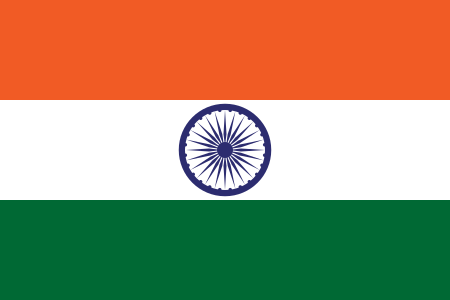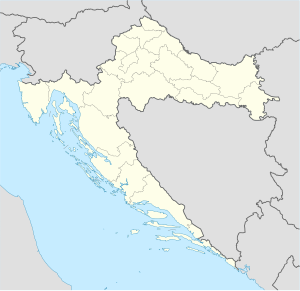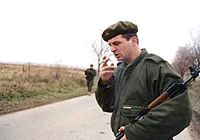|
Batalha de Vukovar
A Batalha de Vukovar (em croata: Bitka za Vukovar; em sérvio: Битка за Вуковар; romaniz.: Bitka za Vukovar) foi um cerco de 87 dias a cidade de Vukovar no leste da Croácia onde o Exército Popular da Iugoslávia, apoiados por várias forças paramilitares da Sérvia, combateu o Exército croata, entre agosto e novembro de 1991. Antes da Guerra de Independência da Croácia, a pequena cidade barroca era um local próspero com sua população sendo dividida entre croatas, sérvios e outros grupos étnicos. Enquanto a Iugoslávia se desintegrava, o presidente sérvio Slobodan Milošević e o presidente croata Franjo Tuđman iniciaram suas políticas internas de orientação nacionalista. Em 1990, uma incursão armada de milícias sérvio-croatas, apoiados pelo governo da Sérvia e por vários grupos paramilitares, tomou controle de áreas da Croácia onde a maioria da população era de origem sérvia. O exército iugoslavo então interveio em favor da rebelião e o conflito se tornou uma guerra aberta no leste croata na região da Eslavônia em maio de 1991. Em agosto, as forças armadas da Iugoslávia lançaram uma grande ofensiva militar contra a Croácia, atacando várias cidades, incluindo Vukovar.[7]
Vukovar era defendido por 1 800 soldados mal armados da Guarda Nacional croata e do corpo de voluntários civis, contra 36 mil homens do exército iugoslavo e das forças paramilitares sérvias fortemente armadas e equipadas com veículos blindados e artilharia. Durante a batalha, tiros de canhão e foguetes foram disparados contra a cidade em uma média de 12 mil projéteis por dia.[8] Naquela época, esta foi a maior e mais prolongada batalha lutada na Europa em muitos anos, e Vukovar se tornou a primeira cidade européia a ser praticamente toda destruída em combate desde a Segunda Guerra Mundial.[9][10]
Quando Vukovar caiu em 18 de novembro de 1991, centenas de soldados e civis croatas foram massacrados pelas forças sérvias e pelo menos 31 mil pessoas foram deportadas da cidade e de seus arredores.[11][12] Grande parte da população da cidade sofreu uma limpeza étnica e o local passou a fazer parte da auto-proclamada República Sérvia de Krajina. Vários líderes políticos e militares sérvios, incluindo o presidente Milošević, foram indiciados e alguns condenados por crimes de guerra cometidos durante esta batalha.
A batalha exauriu o exército iugoslavo e acabou sendo um momento decisivo da guerra na Croácia. Um cessar-fogo foi declarado algumas semanas depois. Vukovar continuou sob controle sérvio até 1998 quando a cidade foi pacificamente reintegrada a Croácia. Ela foi reconstruida mas mais da metade da população que vivia lá antes da guerra ainda está dispersada pelo país e vários prédios ainda estão em ruinas. As suas comunidades étnicas continuam divididas e a prosperidade da cidade não foi retomada.[13]
Antecedentes
Vukovar é um importante centro regional na fronteira leste da Croácia, situado no leste da Eslavônia, na margem oeste do rio Danúbio. A área tem uma população diversificada de croatas, sérvios, húngaros, eslovacos, rutenos e outras nacionalidades, que viveram juntos durante séculos em relativa harmonia antes da guerra da independência da Croácia. Era também uma das áreas mais ricas da Iugoslávia antes do conflito.[14] A prosperidade de longa data de Vukovar foi refletida em um dos melhores conjuntos de arquitetura barroca da Croácia.[15]
A região passou por grandes mudanças demográficas após a Segunda Guerra Mundial, quando seus habitantes étnicos alemães foram expulsos e substituídos por colonos de outras partes da Iugoslávia.[16] Em 1991, o último censo iugoslavo registrou o município de Vukovar, que incluía a cidade e aldeias vizinhas, como tendo 84 189 habitantes, dos quais 43,8% eram croatas, 37,5% eram sérvios e os restantes eram membros de outros grupos étnicos. A população da cidade era 47% croata e 32,3% sérvia.[17]
A partir de 1945, a Iugoslávia foi governada como um estado socialista federal composto por seis repúblicas recém-criadas — Eslovênia, Croácia, Bósnia e Herzegovina, Sérvia, Montenegro e Macedônia.[18] A atual fronteira entre a Sérvia e a Croácia foi definida em 1945 por uma comissão do governo federal iugoslavo que atribuiu áreas de maioria sérvia à República Socialista da Sérvia e aquelas de maioria croata à República Socialista da Croácia. No entanto, uma considerável minoria sérvia permaneceu dentro deste último.[19]
Após a morte do líder iugoslavo Josip Broz Tito em 1980, o nacionalismo étnico há muito suprimido reviveu e as repúblicas individuais começaram a afirmar sua autoridade com mais força à medida que o governo federal enfraquecia. A Eslovênia e a Croácia avançaram para a democracia multipartidária e a reforma econômica, mas o autoritário presidente comunista da Sérvia, Slobodan Milošević, se opôs à reforma e procurou aumentar o poder do governo iugoslavo.[20] Em 1990, a Eslovênia e a Croácia realizaram eleições que acabaram com o regime comunista e levaram partidos nacionalistas pró-independência ao poder em ambas as repúblicas. Na Croácia, a União Democrática Croata (HDZ) de Franjo Tuđman assumiu o poder, com Tuđman como presidente.[21]
O programa de Tuđman foi contestado por muitos membros da minoria sérvia da Croácia, para quem ele era abertamente antagônico.[21] O Partido Democrático Sérvio da Croácia (SDS), apoiado por Milošević, denunciou o HDZ como uma reencarnação do movimento nacionalista-fascista ustaše, que massacrou centenas de milhares de sérvios durante a Segunda Guerra Mundial.[22] A partir de meados de 1990, o SDS montou uma rebelião armada em áreas habitadas por sérvios da Croácia e estabeleceu o autodeclarado Área Autônoma Sérvia de Krajina, com apoio secreto do governo sérvio e de grupos paramilitares sérvios. O governo croata rapidamente perdeu o controle de grandes áreas da república.[22] Em fevereiro de 1991, os sérvios de Krajina declararam independência da Croácia e anunciaram que se uniriam à Sérvia. Outras comunidades sérvias na Croácia também anunciaram que iriam se separar e estabeleceram suas próprias milícias.[23]
Galeria de fotos
-
Um militar sérvio em Erdut, 1991.
-
Um caça G-4 da força aérea iugoslava. A superioridade em equipamentos da Sérvia e de seus aliados fez-se notório durante a batalha mas não preveniu que eles sofressem pesadas baixas durante o conflito.
-
Um tanque M-84 iugoslavo abandonado depois de ser danificado por uma mina-terrestre, em novembro de 1991.
-
Uma rua de Vukovar após a batalha.
-
Um miliciano sérvio no leste da Croácia.
Referências
- ↑ Central Intelligence Agency Office of Russian and European Analysis 2000
- ↑ Šebetovsky 2002
- ↑ Sikavica, 28 November 1997
- ↑ Virski list, November 2008
- ↑ Central Intelligence Agency Office of Russian and European Analysis 2000
- ↑ Kardov 2007
- ↑ Šebetovsky, Mario (Julho de 2002). «The Battle of Vukovar: The Battle That Saved Croatia» (PDF). Quantico, VA: United States Marine Corps Command and Staff College, Marine Corps University. Consultado em 11 de novembro de 2017
- ↑ Horton 2003
- ↑ Notholt 2008
- ↑ Borger, 2011
- ↑ Turković, Hovens & Gregurek 2004
- ↑ Prosecutor v. Milosevic, 23 October 2002
- ↑ Human Rights Watch (2003). Broken Promises : impediments to refugee return in Croatia. New York City: Human Rights Watch. OCLC 52983733
- ↑ Prosecutor v. Mrkšić, Radić & Šljivančanin – Judgement, 27 September 2007, p. 8.
- ↑ Ivančević 1986
- ↑ Gow 2003
- ↑ Bjelajac & Žunec 2009
- ↑ «Serbia votes to end Yugoslavia». BBC News. 28 de janeiro de 2003. Consultado em 20 de fevereiro de 2022. Cópia arquivada em 25 de março de 2014
- ↑ Cvitanic 2011
- ↑ Goldman 1997
- ↑ a b Boduszyński 2010
- ↑ a b Bassiouni, M. Cherif (28 de dezembro de 1994). «Final report of the United Nations Commission of Experts established pursuant to security council resolution 780 (1992), Annex IV – The policy of ethnic cleansing». United Nations. Consultado em 20 de fevereiro de 2022. Cópia arquivada em 23 de março de 2011
- ↑ Bell 2003
Bibliografia
- Armatta, Judith (2010). Twilight of Impunity: The War Crimes Trial of Slobodan Milošević. Durham, North Carolina: Duke University Press. ISBN 978-0-8223-4746-0
- Baker, Catherine (2010). Sounds of the Borderland: Popular Music, War and Nationalism in Croatia Since 1991. Farnham, Surrey: Ashgate Publishing Ltd. ISBN 978-1-4094-0337-1
- Bell, Imogen, ed. (2003). Central and South-Eastern Europe 2004. London: Europa Publications. ISBN 978-1-85743-186-5
- Bjelajac, Mile; Žunec, Ozren (2009). «The War in Croatia, 1991–1995». In: Ingrao, Charles W. Confronting The Yugoslav Controversies: A Scholars' Initiative. West Lafayette, Indiana: Purdue University Press. ISBN 978-1-55753-533-7
- Boduszyński, Mieczysław P. (2010). Regime Change in the Yugoslav Successor States: Divergent Paths Toward a New Europe. Baltimore, Maryland: Johns Hopkins University Press. ISBN 978-0-8018-9429-9
- Brown, Cynthia G.; Karim, Farhad, eds. (1995). Playing the "Communal Card": Communal Violence and Human Rights. New York City: Human Rights Watch. ISBN 978-1-56432-152-7
- Central Intelligence Agency Office of Russian and European Analysis (2000). Balkan Battlegrounds: A Military History of the Yugoslav Conflict, 1990–1995: Volume 1. Washington, D.C.: Central Intelligence Agency. ISBN 978-0-16-066472-4
- Cigar, Norman (1996). «The Serbo-Croatian War, 1991». In: Meštrović, Stjepan Gabriel. Genocide after Emotion: The Post-Emotional Balkan War. London: Routledge. ISBN 978-0-415-12293-1
- Collin, Matthew (2001). This Is Serbia Calling: Rock 'n' Roll Radio and Belgrade's Underground Resistance. London: Serpent's Tail. ISBN 978-1-85242-682-8
- Coward, Martin (2009). Urbicide: The Politics of Urban Destruction. London: Taylor & Francis. ISBN 978-0-415-46131-3
- Cvitanic, Marilyn (2011). Culture and Customs of Croatia. Santa Barbara, California: ABC-CLIO. ISBN 978-0-313-35117-4
- Čuljak, Tihomir (2003). Rat [War] (em croata). Osijek: [s.n.] ISBN 953-98383-2-0
- Daković, Nevena (2010). «Remembrances of the Past and the Present». In: Cornis-Pope, Marcel; Neubauer, John. History of the Literary Cultures of East-Central Europe. Amsterdam: John Benjamins Publishing Company. ISBN 978-90-272-3458-2
- Doder, Dusko; Branson, Louise (1999). Milosevic: Portrait of a Tyrant. New York City: Simon and Schuster. ISBN 978-0-684-84308-7
- Goldman, Minton F. (1997). Revolution and change in Central and Eastern Europe: political, economic, and social challenges. Armonk, New York: M.E. Sharpe. ISBN 978-1-56324-758-3
- Gibbs, David N. (2009). First Do No Harm: Humanitarian Intervention and the Destruction of Yugoslavia. Nashville, Tennessee: Vanderbilt University Press. ISBN 978-0-8265-1644-2
- Glenny, Misha (1999). The Fall of Yugoslavia: The Third Balkan War. London: Penguin Books. ISBN 978-0-14-025771-7
- Gow, James (2003). The Serbian Project and Its Adversaries: A Strategy of War Crimes. London: C. Hurst & Co. ISBN 978-1-85065-499-5
- Goulding, Daniel (2002). Liberated Cinema: The Yugoslav Experience, 1945–2001. Bloomington, Indiana: Indiana University Press. ISBN 978-0-253-21582-6
- Hockenos, Paul (2003). Homeland Calling: Exile Patriotism and the Balkan Wars. Ithaca, New York: Cornell University Press. ISBN 978-0-8014-4158-5
- Horton, Richard C. (2003). Second Opinion: Doctors, Diseases and Decisions in Modern Medicine. London: Granta Books. ISBN 978-1-86207-587-0
- Human Rights Watch (2003). Broken Promises : impediments to refugee return in Croatia. New York City: Human Rights Watch. OCLC 52983733
- Ignatieff, Michael (1993). Blood & Belonging : Journeys Into the New Nationalism. London: BBC Books. ISBN 978-0-563-36967-7
- Iordanova, Dina (2001). Cinema of Flames: Balkan Film, Culture and the Media. London: British Film Institute. ISBN 978-0-85170-848-5
- Ivančević, Radovan (1986). Art Treasures of Croatia. Belgrade, Yugoslavia: IRO Motovun. OCLC 18052634
- Johnson, Tony (2011). «Thanatourism and the commodification of space in post-war Croatia and Bosnia». In: Sharpley, Richard; Stone, Philip R. Tourist Experience: Contemporary Perspectives. London: Routledge. ISBN 978-0-415-57278-1
- Kaiser, Timothy (1995). «Archaeology and ideology in southeast Europe». In: Kohl, Philip L; Fawcett, Clare P. Nationalism, Politics and the Practice of Archaeology. Cambridge; New York: Cambridge University Press. ISBN 978-0-521-55839-6
- Karadjis, Mike (2000). Bosnia, Kosova & the West. Sydney, Australia: Resistance Books. ISBN 978-1-876646-05-9
- Kardov, Kruno (2007). «Remember Vukovar». In: Ramet, Sabrina P.; Matić, Davorka. Democratic Transition in Croatia: Value Transformation, Education, and Media. College Station, Texas: Texas A&M University Press. ISBN 978-1-58544-587-5
- Kelly, Michael J (2005). Nowhere to Hide: Defeat of the Sovereign Immunity Defense for Crimes of Genocide and the Trials of Slobodan Milošević and Saddam Hussein. New York City: Peter Lang. ISBN 978-0-8204-7835-7
- Klain, Eduard (1998). «Intergenerational Aspects of the Conflict in the Former Yugoslavia». In: Danieli, Yael. International Handbook of Multigenerational Legacies of Trauma. New York City: Springer. ISBN 978-0-306-45738-8
- Kolstø, Pål (2009). Media Discourse and the Yugoslav Conflicts: Representations of Self and Other. Farnham, Surrey: Ashgate Publishing Ltd. ISBN 978-0-7546-7629-4
- Kurspahić, Kemal (2003). Prime Time Crime: Balkan Media in War and Peace. Washington, D.C.: US Institute of Peace Press. ISBN 978-1-929223-39-8
- Little, Allan; Silber, Laura (1997). Yugoslavia: Death of a Nation. London: Penguin. ISBN 978-0-14-026263-6
- Lukić, Jasmina (2010). «Gender and War in South Slavic Literature». In: Cornis-Pope, Marcel; Neubauer, John. History of the Literary Cultures of East-Central Europe. Amsterdam: John Benjamins Publishing Company. ISBN 978-90-272-3458-2
- MacDonald, David Bruce (2002). Balkan Holocausts?: Serbian and Croatian Victim Centered Propaganda and the War in Yugoslavia. Manchester: Manchester University Press. ISBN 978-0-7190-6467-8
- Malović, Stjepan; Selnow, Gary W. (2001). The People, Press, and Politics of Croatia. Westport, Connecticut: Greenwood Publishing Group. ISBN 978-0-275-96543-3
- Marijan, Davor (2004). Bitka za Vukovar [Battle of Vukovar] (em croata). Zagreb: Hrvatski institut za povijest. ISBN 9789536324453
- Merrill, Christopher (1999). Only the Nails Remain: Scenes from the Balkan Wars. Lanham, Maryland: Rowman & Littlefield. ISBN 978-0-7425-1686-1
- Milošević, Milan (2000). «The Media Wars: 1987–1997». In: Ridgeway, James; Udovički, Jasminka. Burn This House: The Making and Unmaking of Yugoslavia. Durham, North Carolina: Duke University Press. ISBN 978-0-8223-2590-1
- Nation, R. Craig (2003). War in the Balkans, 1991–2002. Carlisle, Pennsylvania: Strategic Studies Institute. ISBN 978-1-58487-134-7
- Nizich, Ivana (1992). War Crimes in Bosnia-Hercegovina, Volume 2. New York City: Human Rights Watch. ISBN 978-1-56432-083-4
- Notholt, Stuart (2008). Fields of Fire : An atlas of ethnic conflict. London: Troubador Publishing Ltd. ISBN 978-1-906510-47-3
- O'Shea, Brendan (2005). The Modern Yugoslav Conflict 1991–1995: Perception, Deception and Dishonesty. London: Routledge. ISBN 978-0-415-35705-0
- Phillips, John (2004). Macedonia: Warlords & Rebels in the Balkans. London: I.B.Tauris. ISBN 978-1-86064-841-0
- Ramet, Sabrina P. (2005). Thinking about Yugoslavia: Scholarly Debates about the Yugoslav Breakup and the Wars in Bosnia and Kosovo. Cambridge, UK: Cambridge University Press. ISBN 978-0-521-85151-0
- Ramet, Sabrina P. (2006). The Three Yugoslavias: State-Building and Legitimation, 1918–2005. Bloomington, Indiana: Indiana University Press. ISBN 978-0-253-34656-8
- Sell, Louis (2002). Slobodan Milošević and the Destruction of Yugoslavia. Durham, North Carolina: Duke University Press. ISBN 978-0-8223-3223-7
- Shawcross, William (2001). Deliver Us from Evil : Warlords and peacekeepers in a world of endless conflict. London: Bloomsbury Publishing. ISBN 978-0-7475-5312-0
- Sikavica, Stipe (2000). «The Army's Collapse». In: Ridgeway, James; Udovički, Jasminka. Burn This House: The Making and Unmaking of Yugoslavia. Durham, North Carolina: Duke University Press. ISBN 978-0-8223-2590-1
- Sloan, Joan (2007). Reel Women: An International Directory of Contemporary Feature Films About Women. Lanham, Maryland: Scarecrow Press. ISBN 978-0-8108-5738-4
- Štitković, Ejup (2000). «Croatia: The First War». In: Ridgeway, James; Udovički, Jasminka. Burn This House: The Making and Unmaking of Yugoslavia. Durham, North Carolina: Duke University Press. ISBN 978-0-8223-2590-1
- Stojanović, Dubravka (2000). «The Traumatic Circle of the Serbian Opposition». In: Popov, Nebojša. The Road to War in Serbia: Trauma and Catharsis. Budapest: Central European University Press. ISBN 978-963-9116-56-6
- Stover, Eric; Weinstein, Harvey M (2004). My Neighbor, My Enemy: Justice and Community in the Aftermath of Mass Atrocity. Cambridge, UK: Cambridge University Press. ISBN 978-0-521-54264-7
- Stover, Eric (2007). The Witnesses: War Crimes and the Promise of Justice in the Hague. Philadelphia: University of Pennsylvania Press. ISBN 978-0-8122-1994-4
- Sremac, Danielle S (1999). War of Words: Washington Tackles the Yugoslav Conflict. Westport, Connecticut: Greenwood Publishing Group. ISBN 978-0-275-96609-6
- Tanner, Marcus (2010). Croatia: A Nation Forged in War. New Haven, Connecticut: Yale University Press. ISBN 978-0-300-16394-0
- Thomas, Nigel; Mikulan, Krunoslav (2006). The Yugoslav Wars (1): Slovenia & Croatia 1991–95. Oxford: Osprey Publishing. ISBN 978-1-84176-963-9
- Thomas, Robert (1999). Serbia under Milošević: Politics in the 1990s. London: C. Hurst & Co. Publishers. ISBN 978-1-85065-341-7
- Thompson, Mark (1992). A Paper House: The Ending of Yugoslavia. London: Hutchinson Radius. ISBN 978-0-09-174619-3
- Turković, Silvana; Hovens, Johannes E; Gregurek, Rudolf (2004). «Strengthening Psychological Health in War Victims and Refugees». In: Wilson, John Preston; Drožđek, Boris. Broken Spirits: The Treatment of Traumatized Asylum Seekers, Refugees, and War and Torture Victims. New York City: Routledge. ISBN 978-0-415-94397-0
- Tus, Anton (2001). «The war up to the Sarajevo Ceasefire». In: Magaš, Branko; Žanić, Ivo. The War in Croatia and Bosnia-Herzegovina 1991–1995. London: Frank Cass Publishers. ISBN 0-7146-8201-2
- Woodward, Susan L. (1995). Balkan Tragedy: Chaos and Dissolution after the Cold War. Washington, D.C.: Brookings Institution Press. ISBN 978-0-8157-9513-1
Ligações externas
 Media relacionados com o Batalha de Vukovar no Wikimedia Commons Media relacionados com o Batalha de Vukovar no Wikimedia Commons
|
|---|
| | Prelúdio | | |
|---|
| 1991 | |
|---|
| 1992 | |
|---|
| 1993–94 | |
|---|
| 1995 | |
|---|
| Relacionados | |
|---|
|
|
|



























